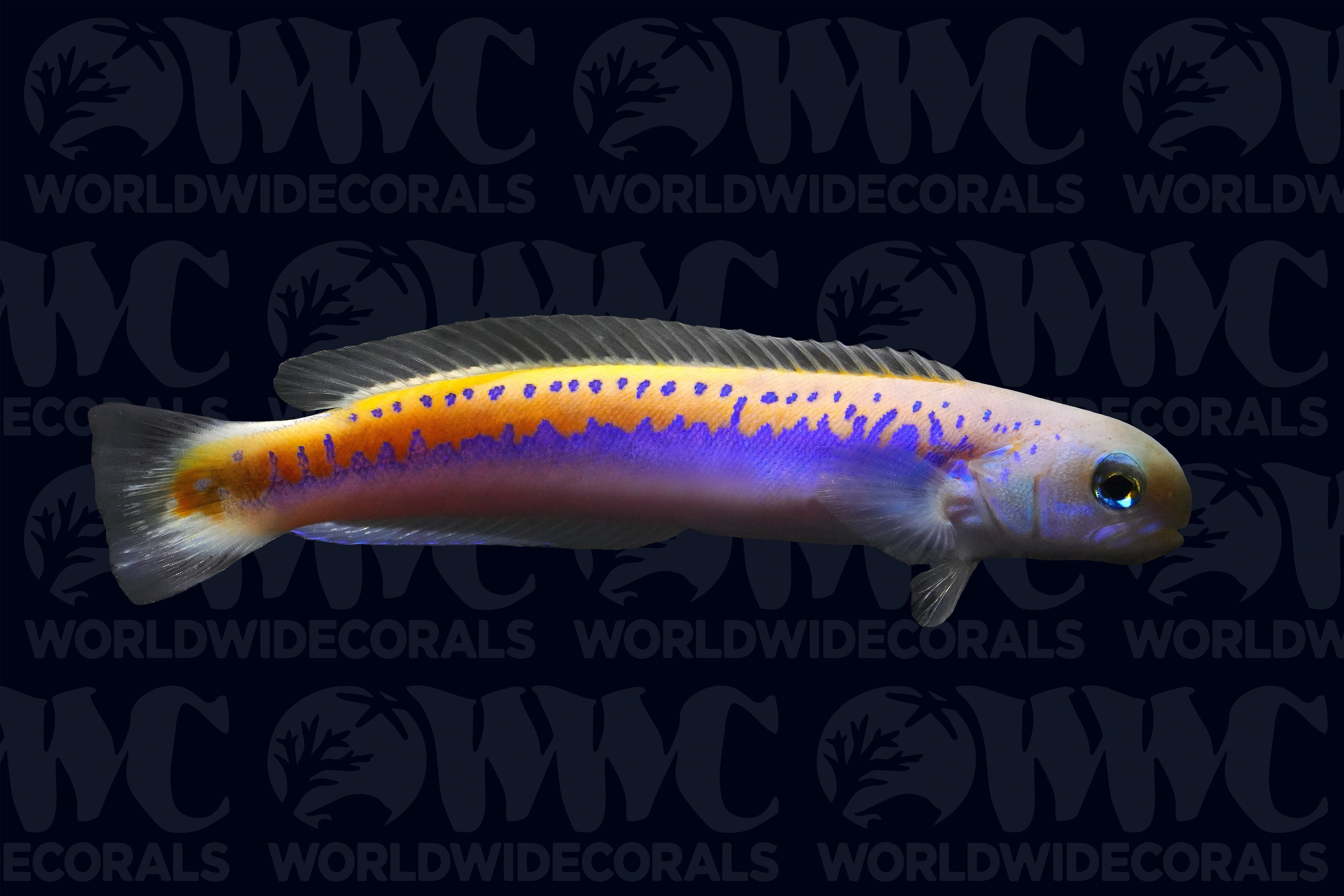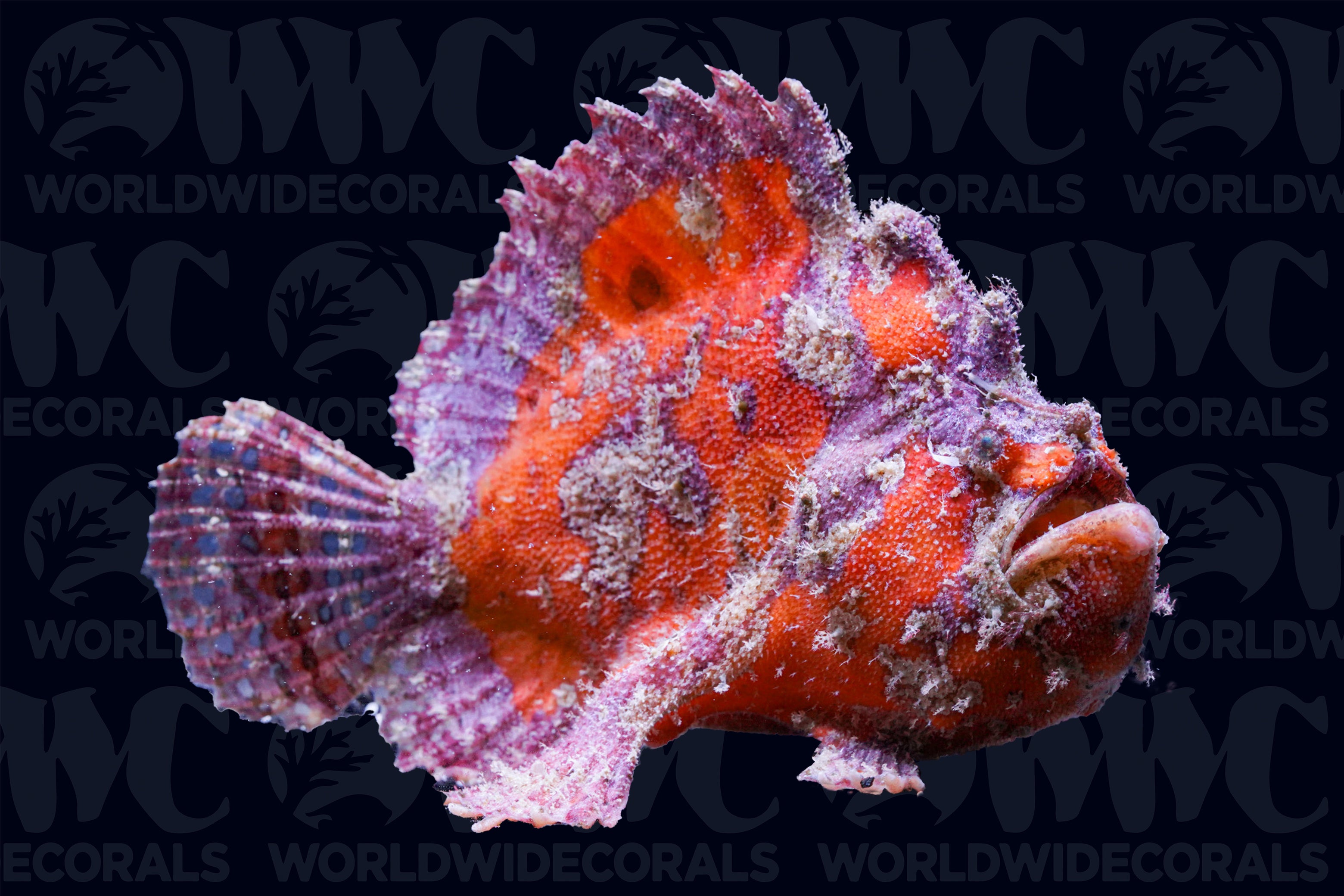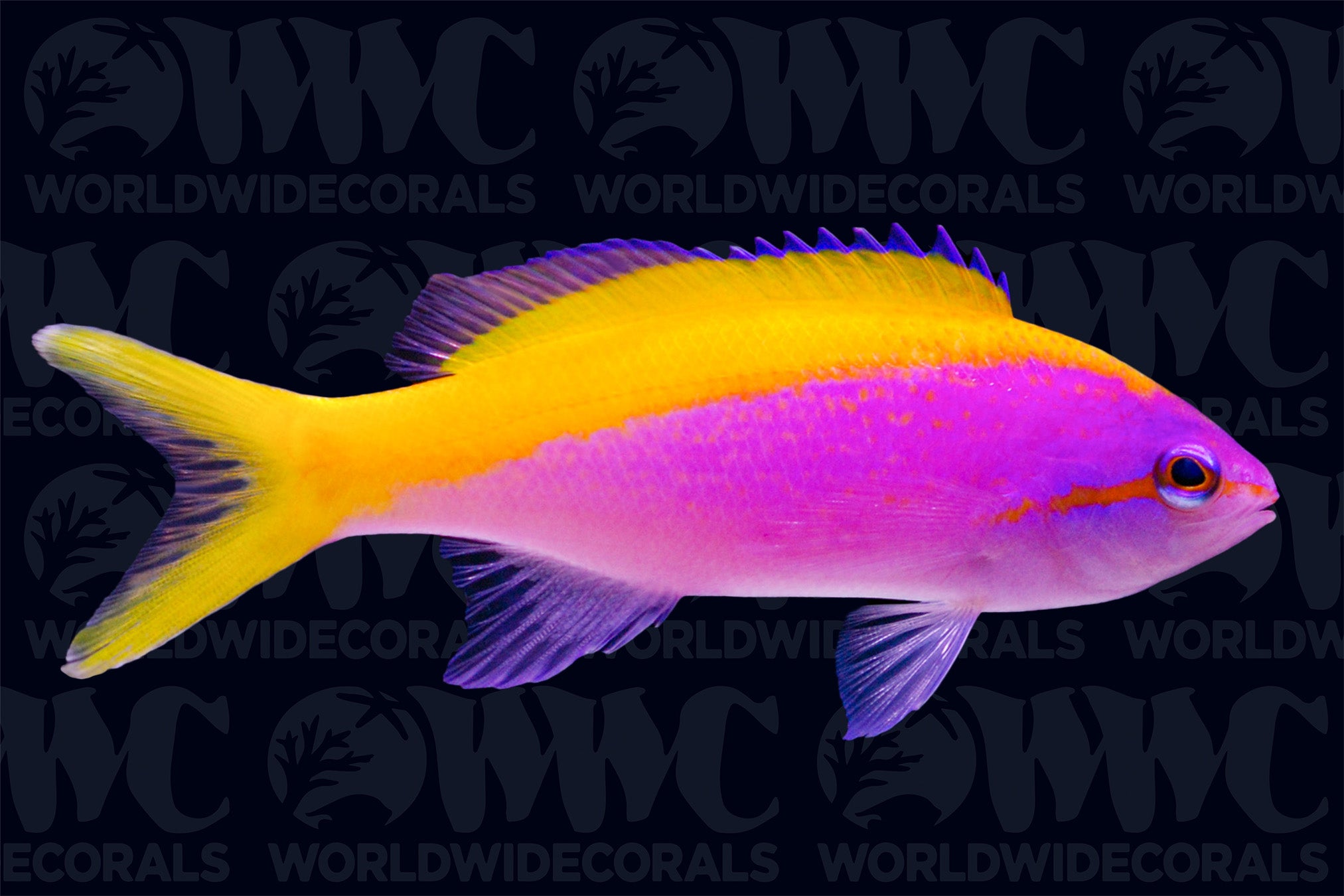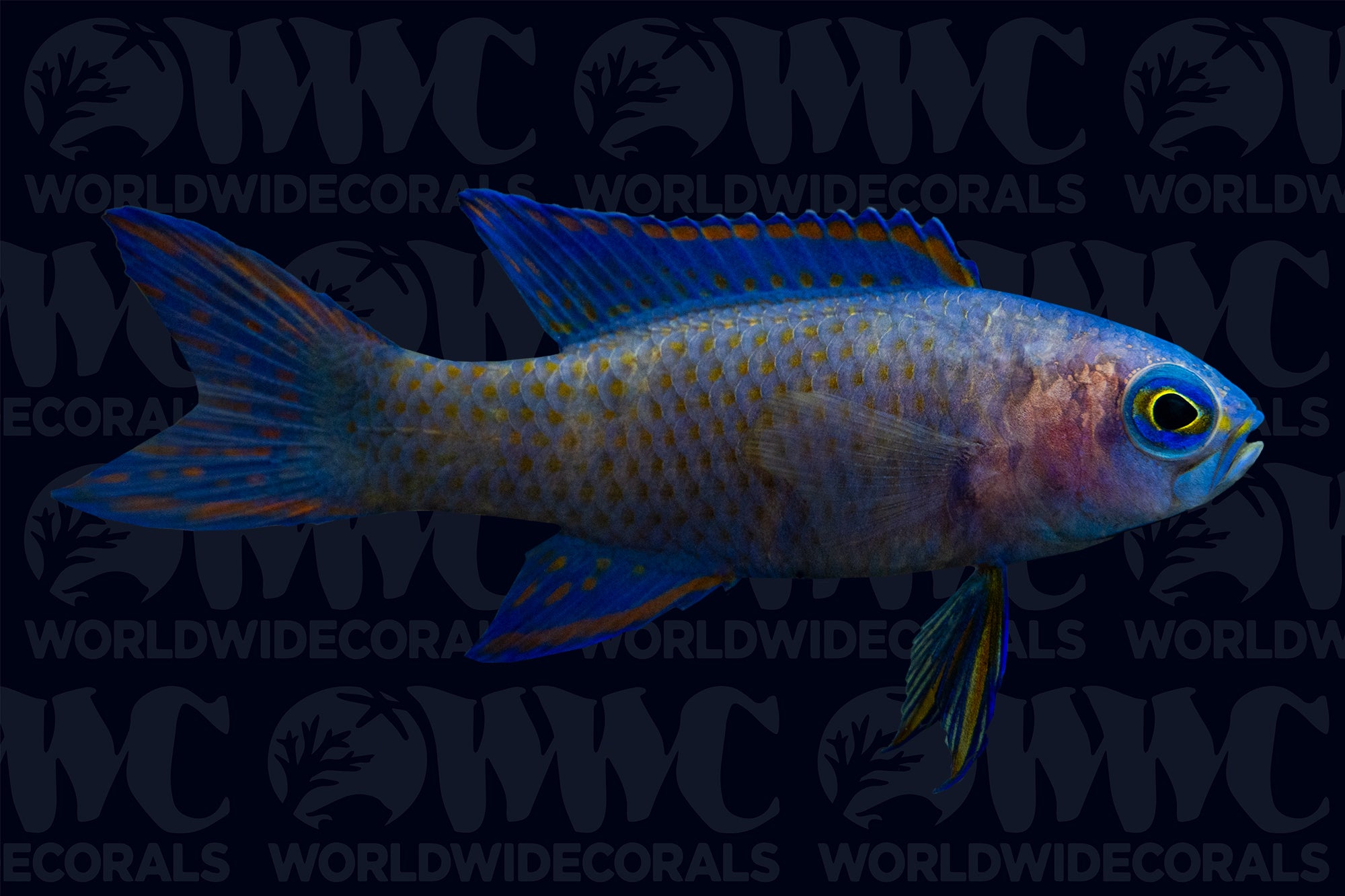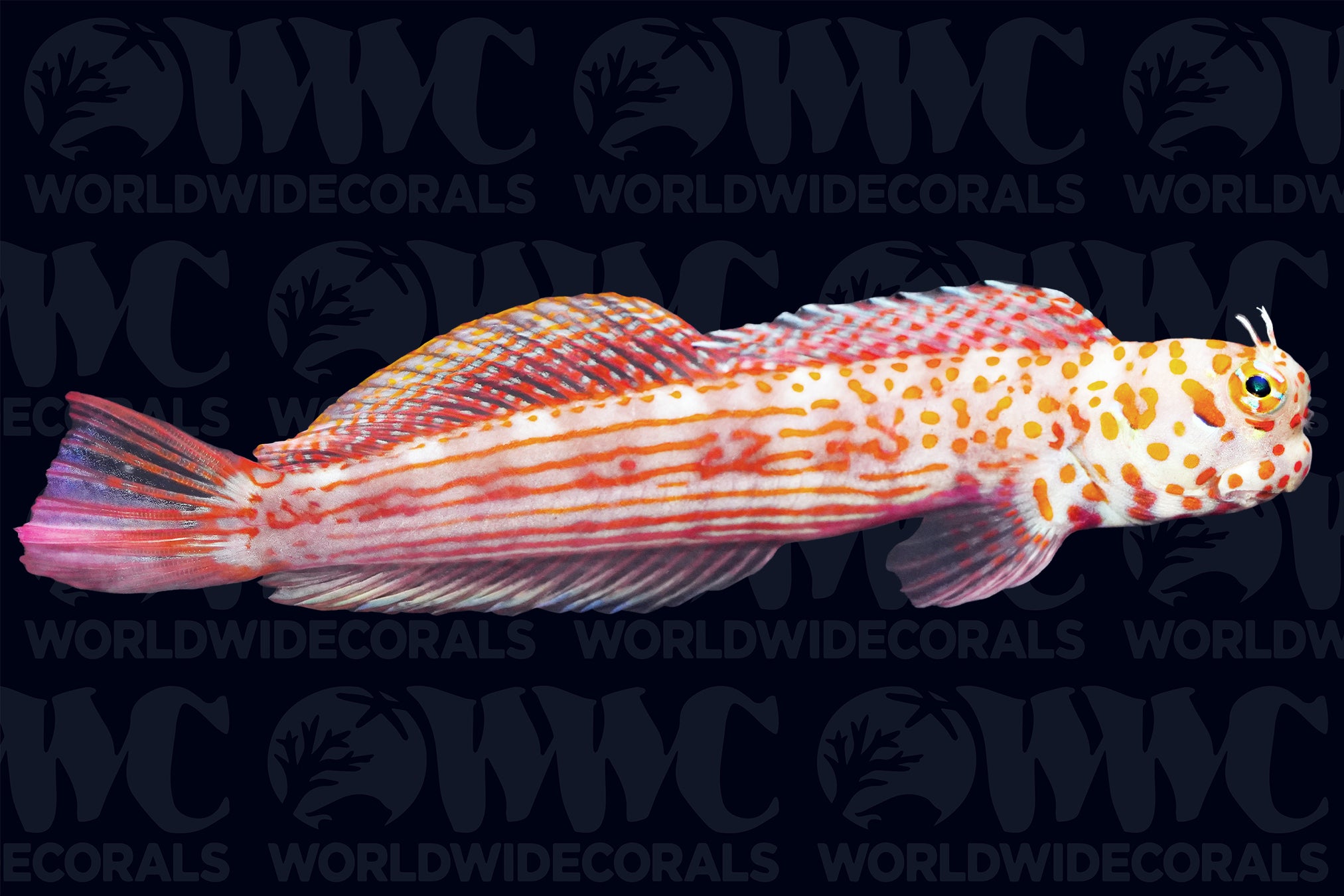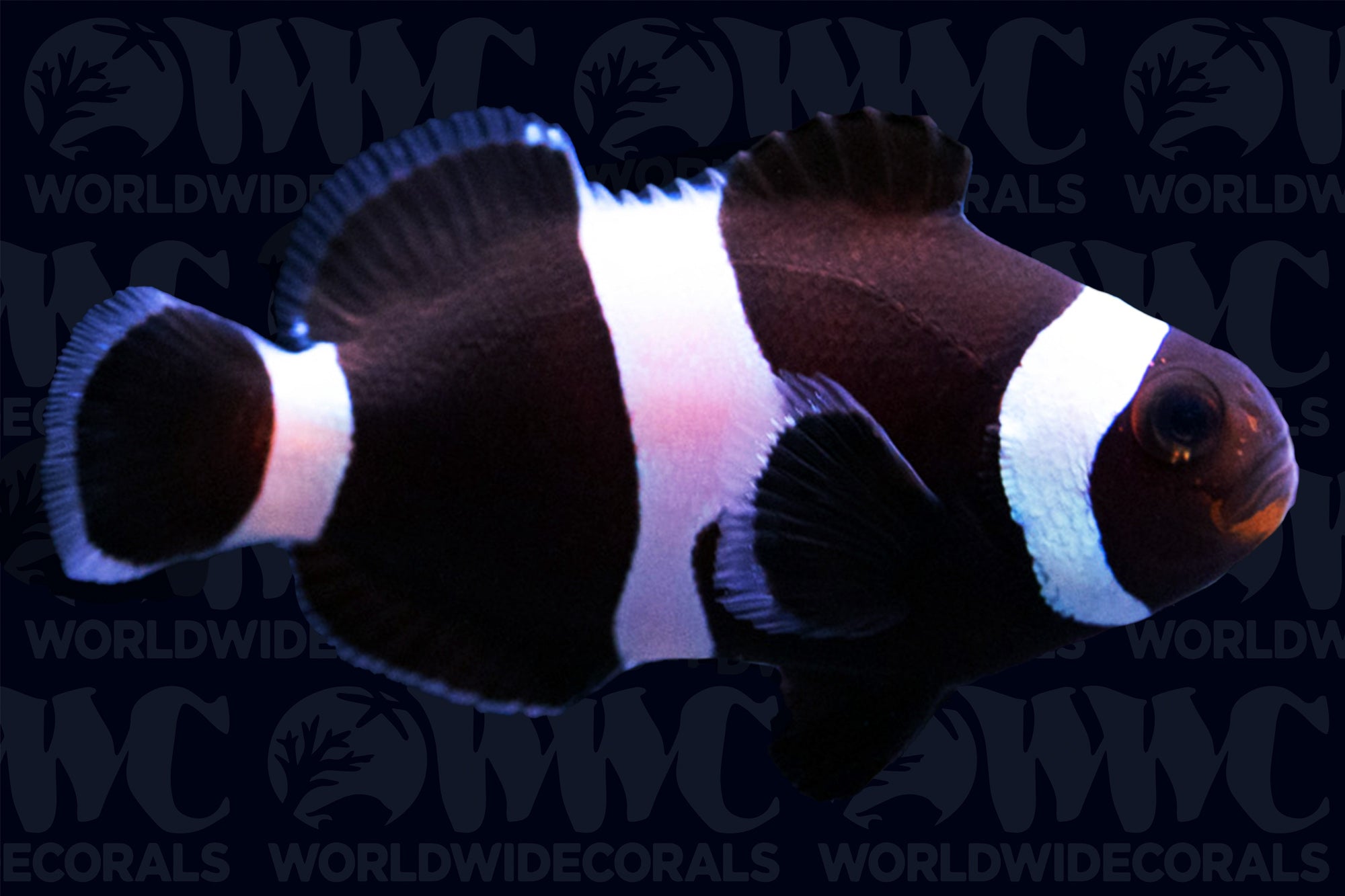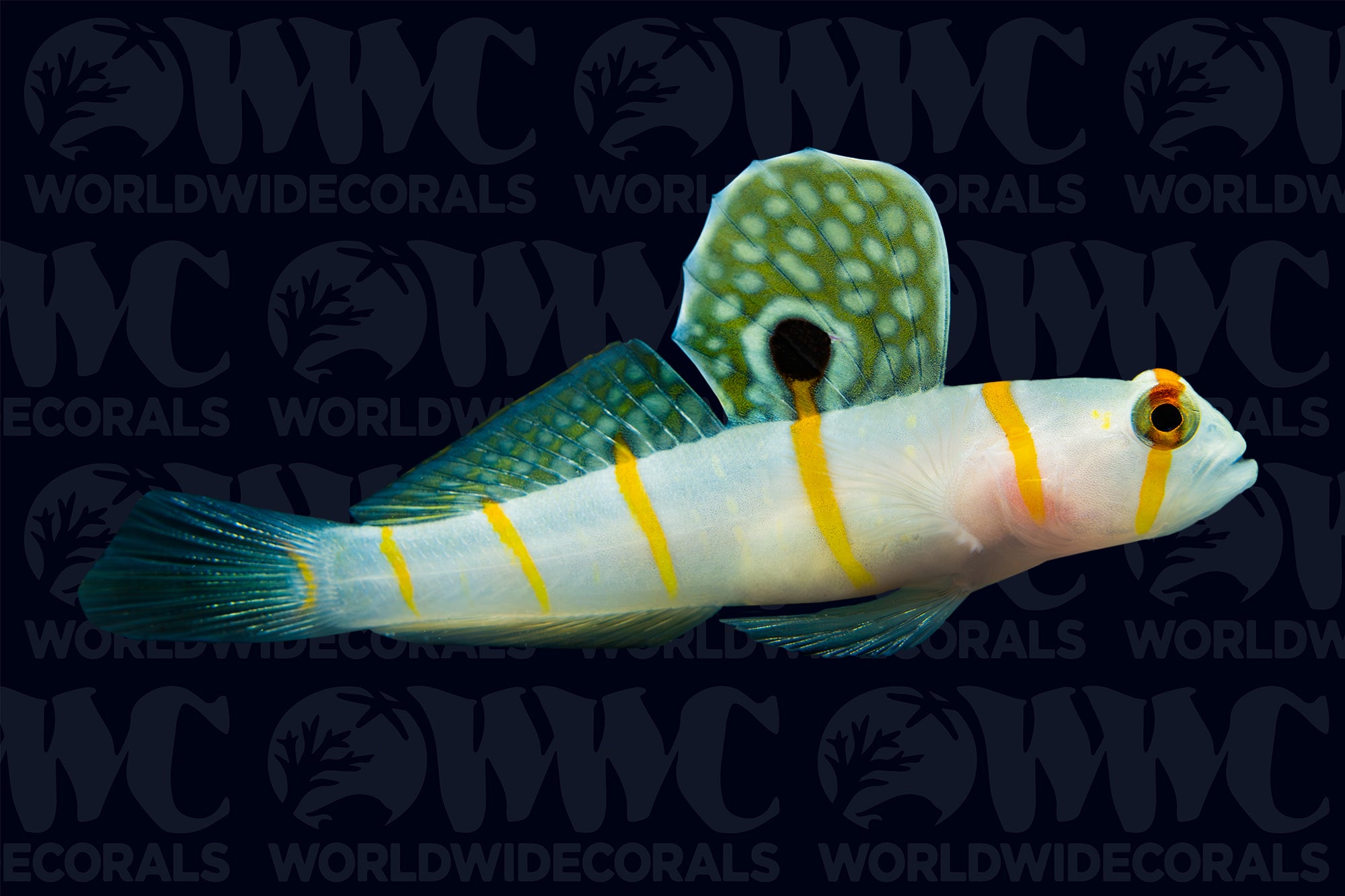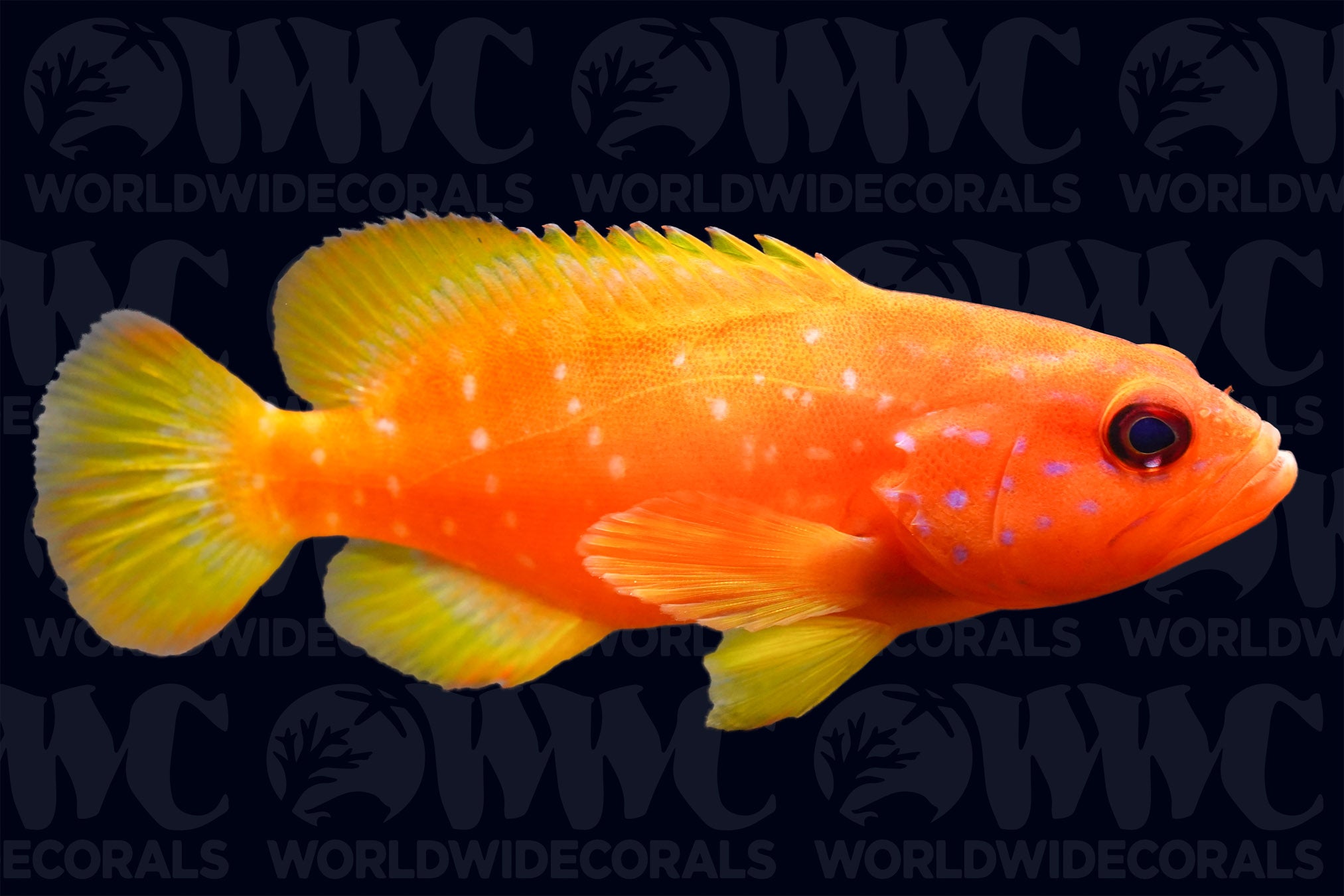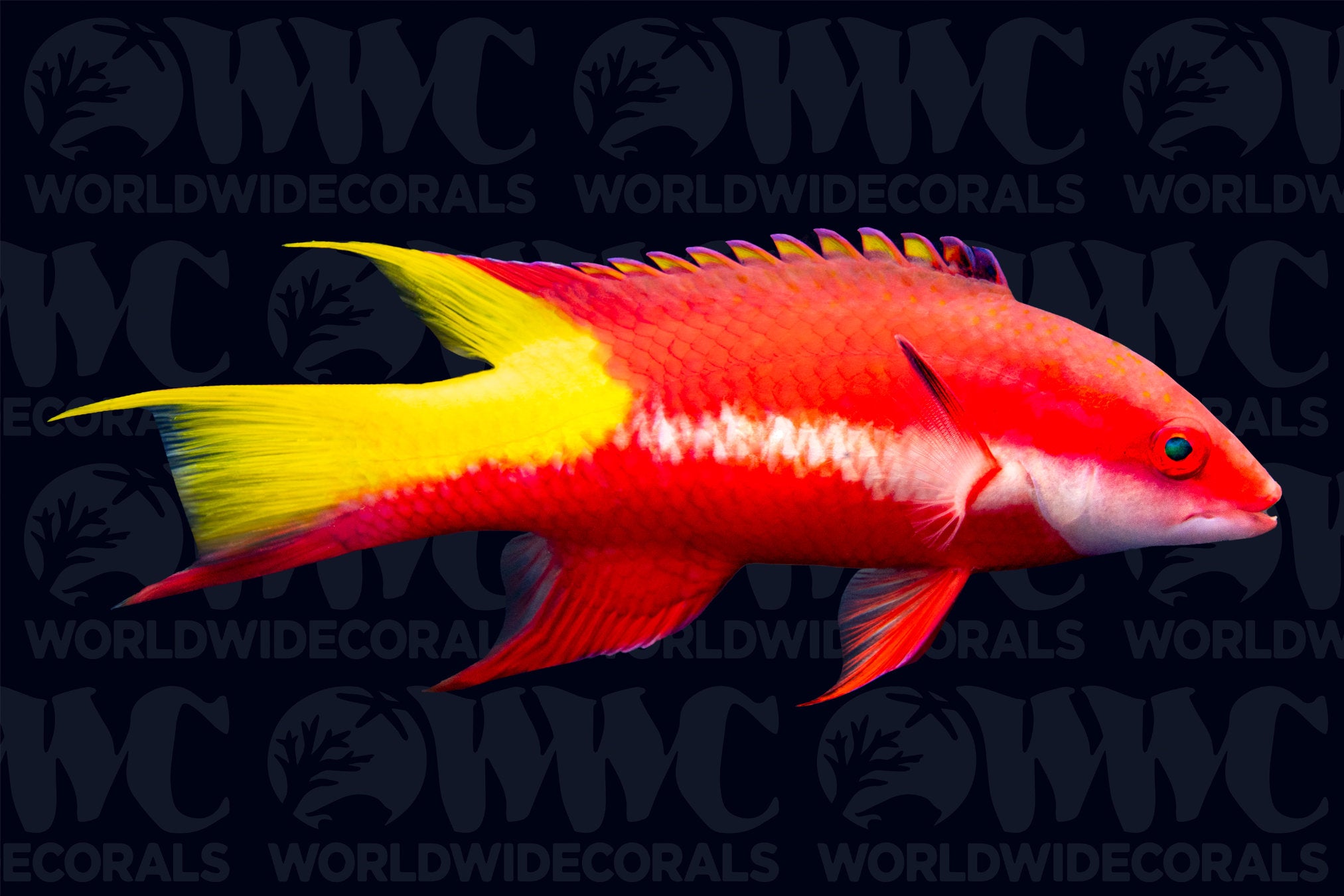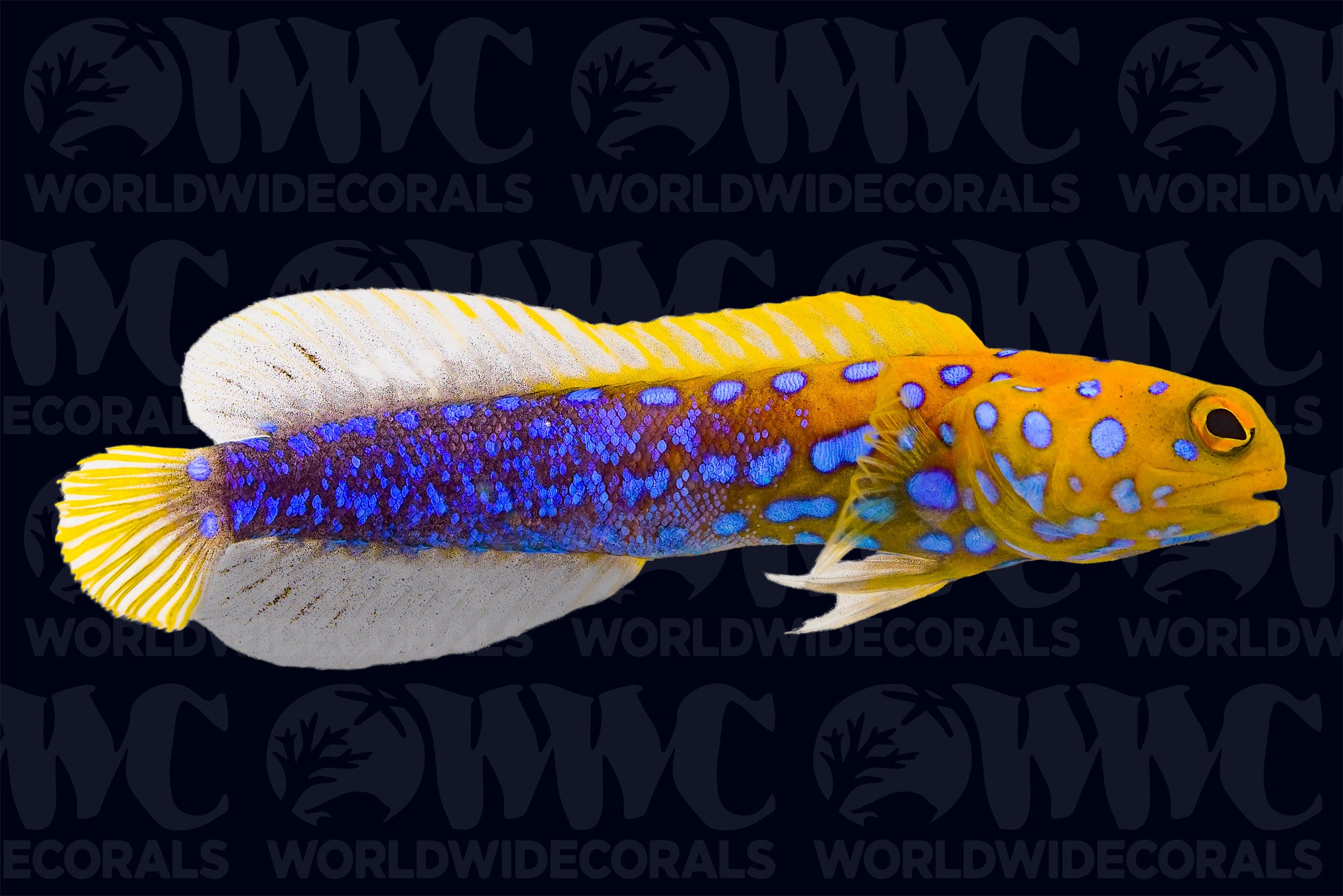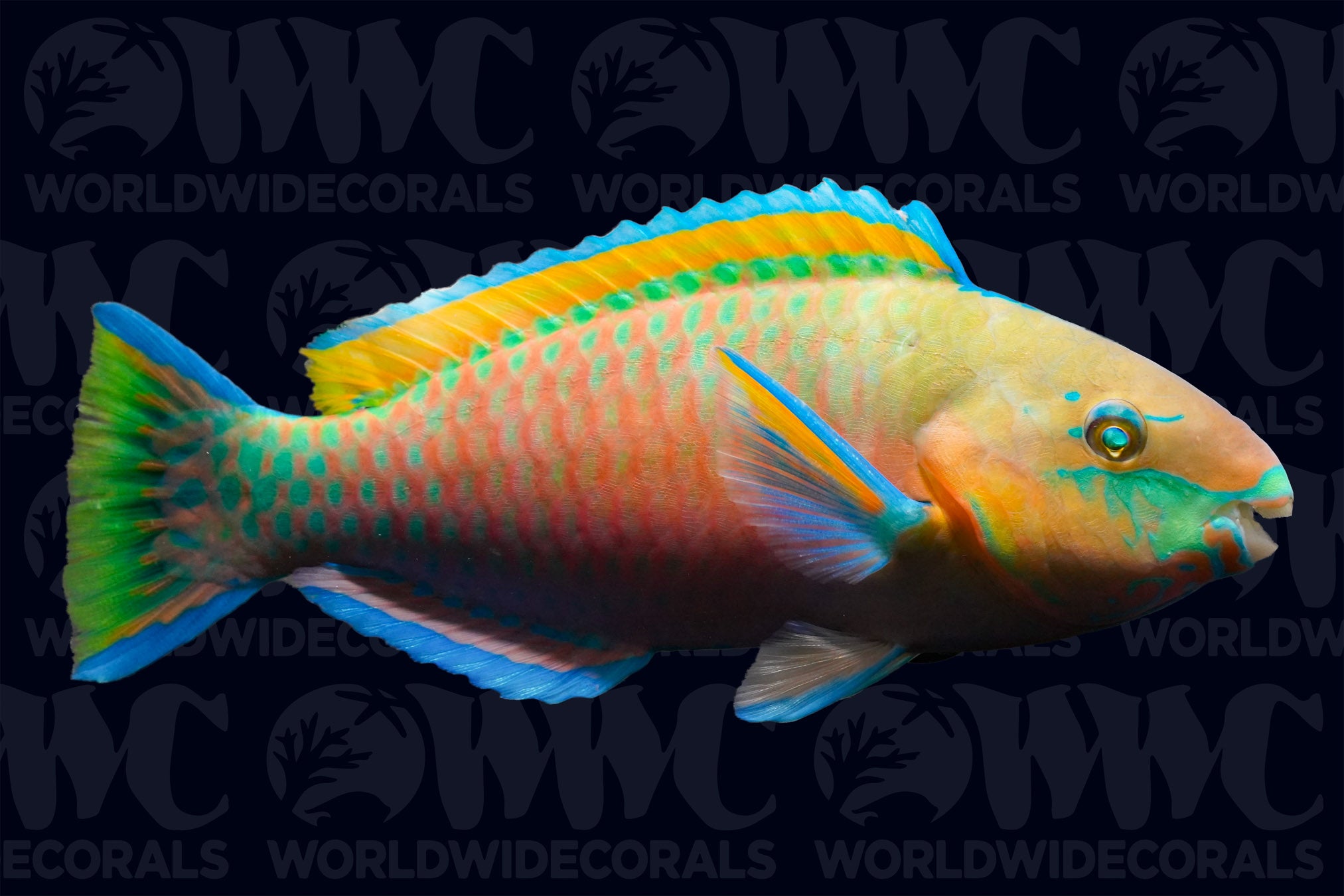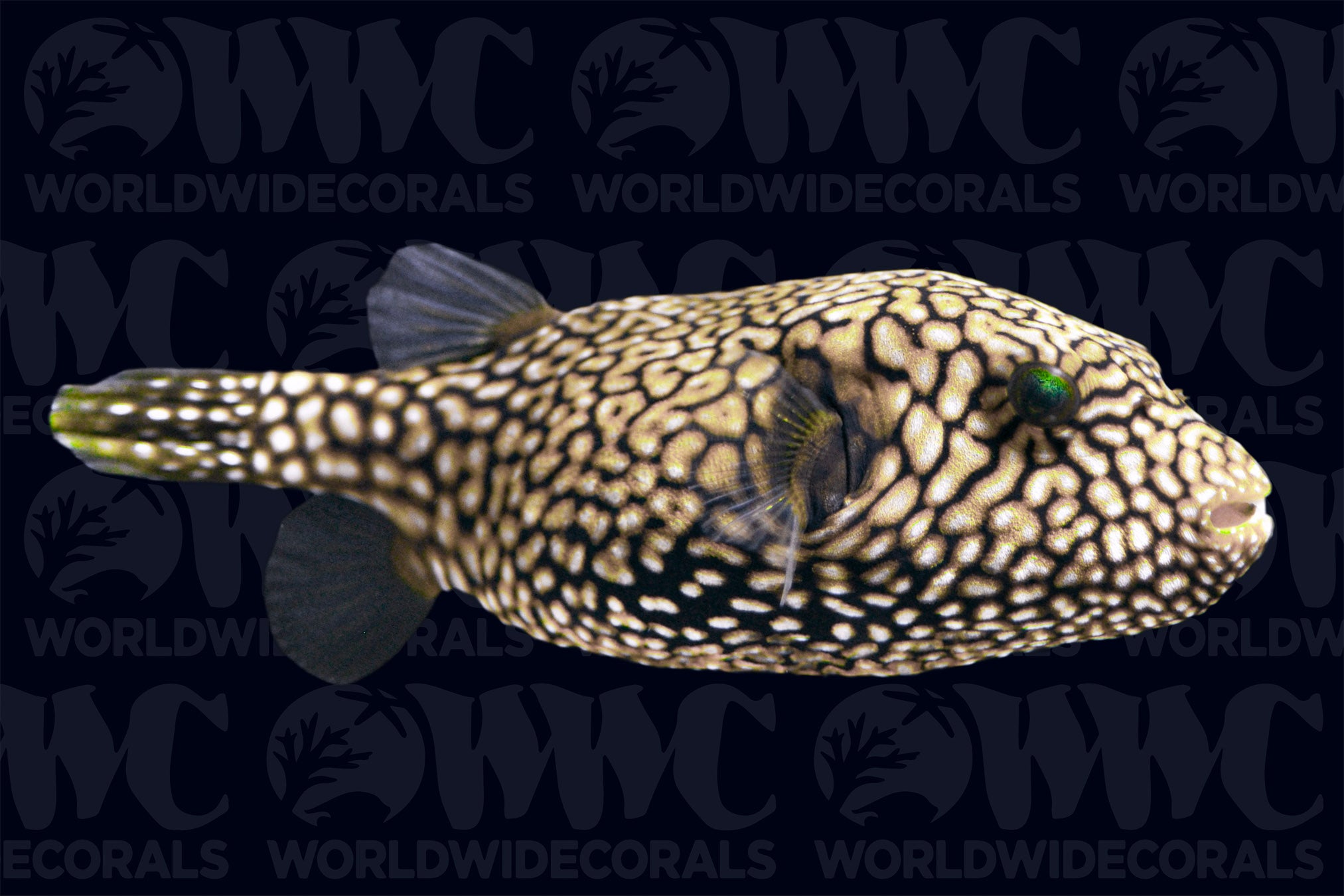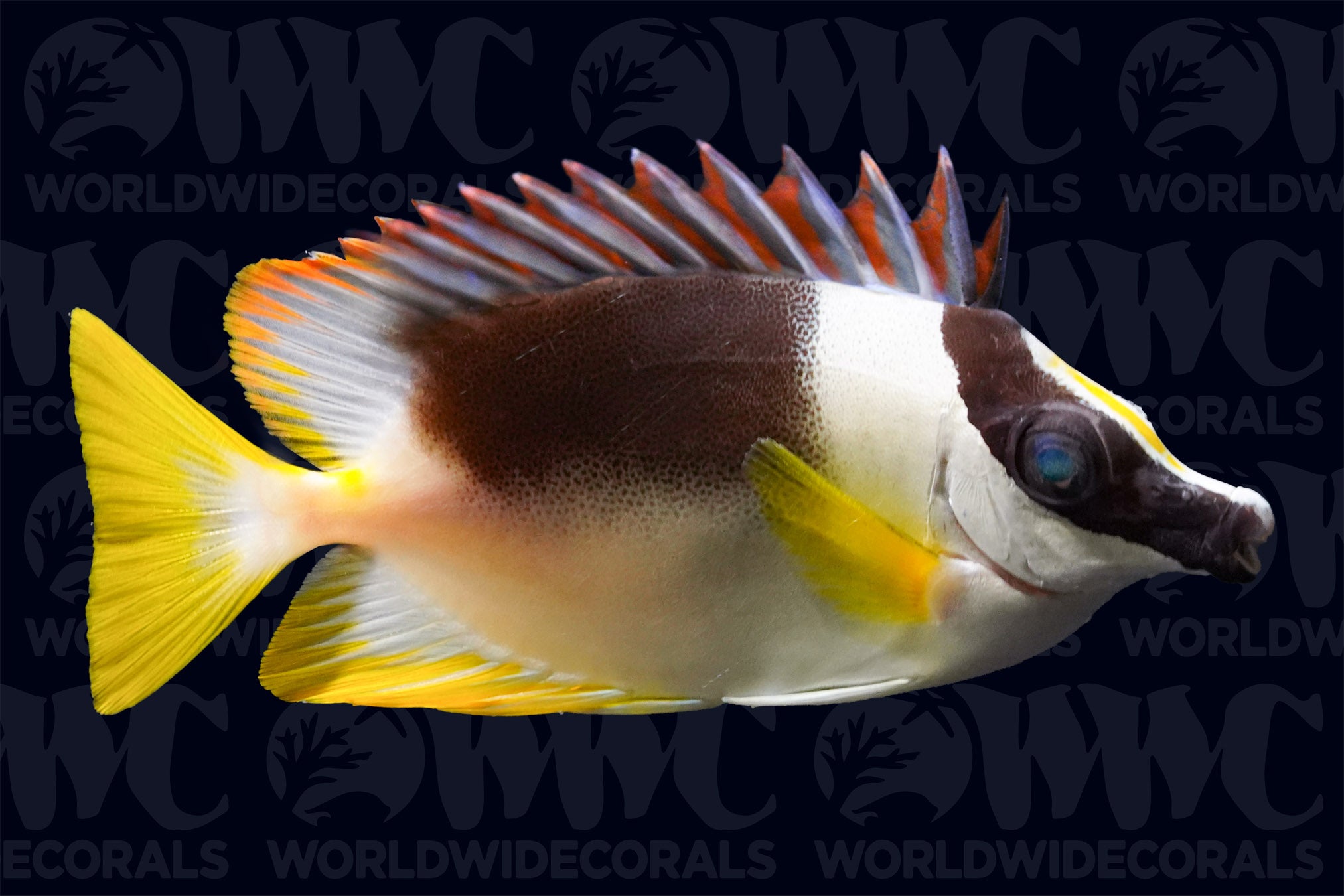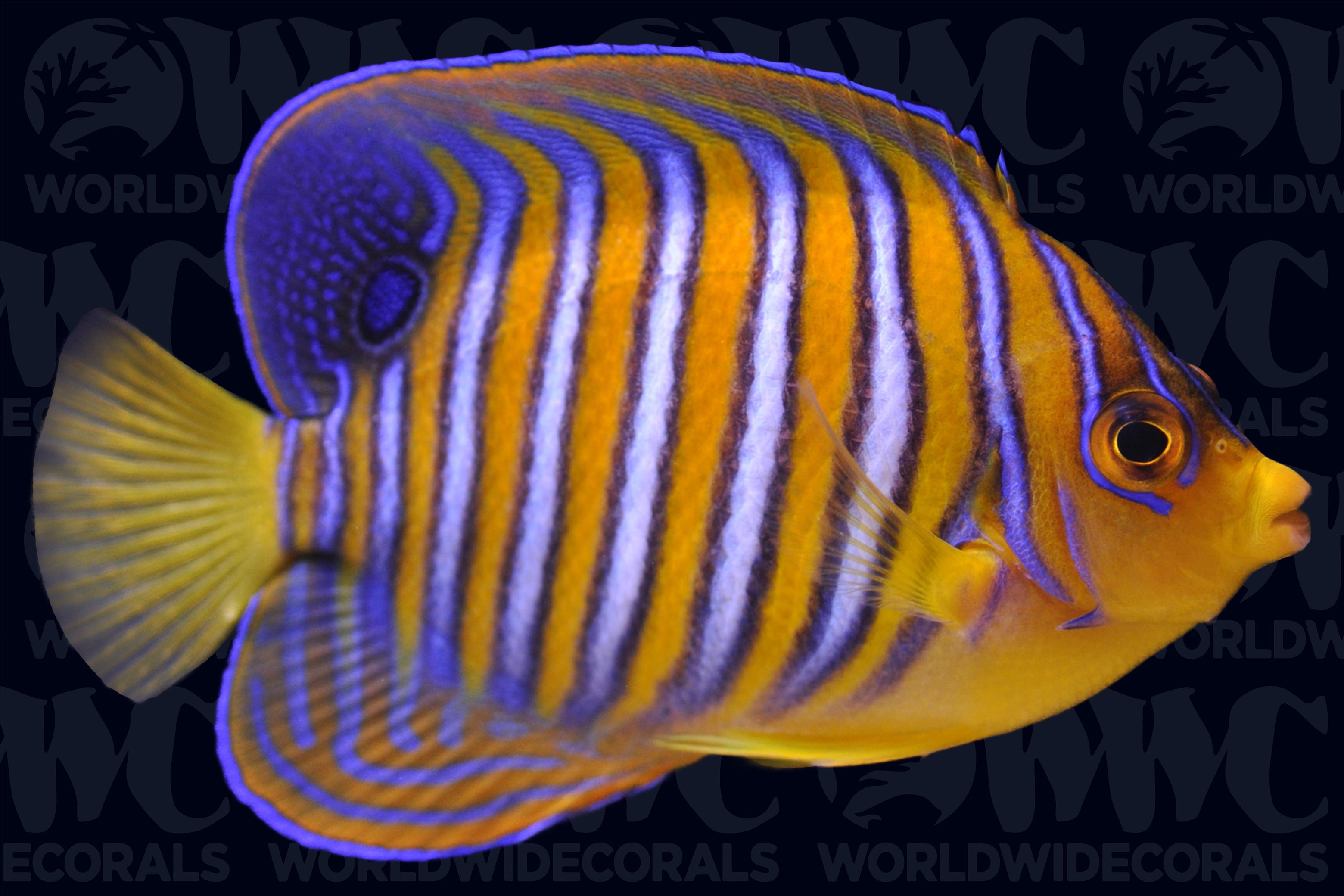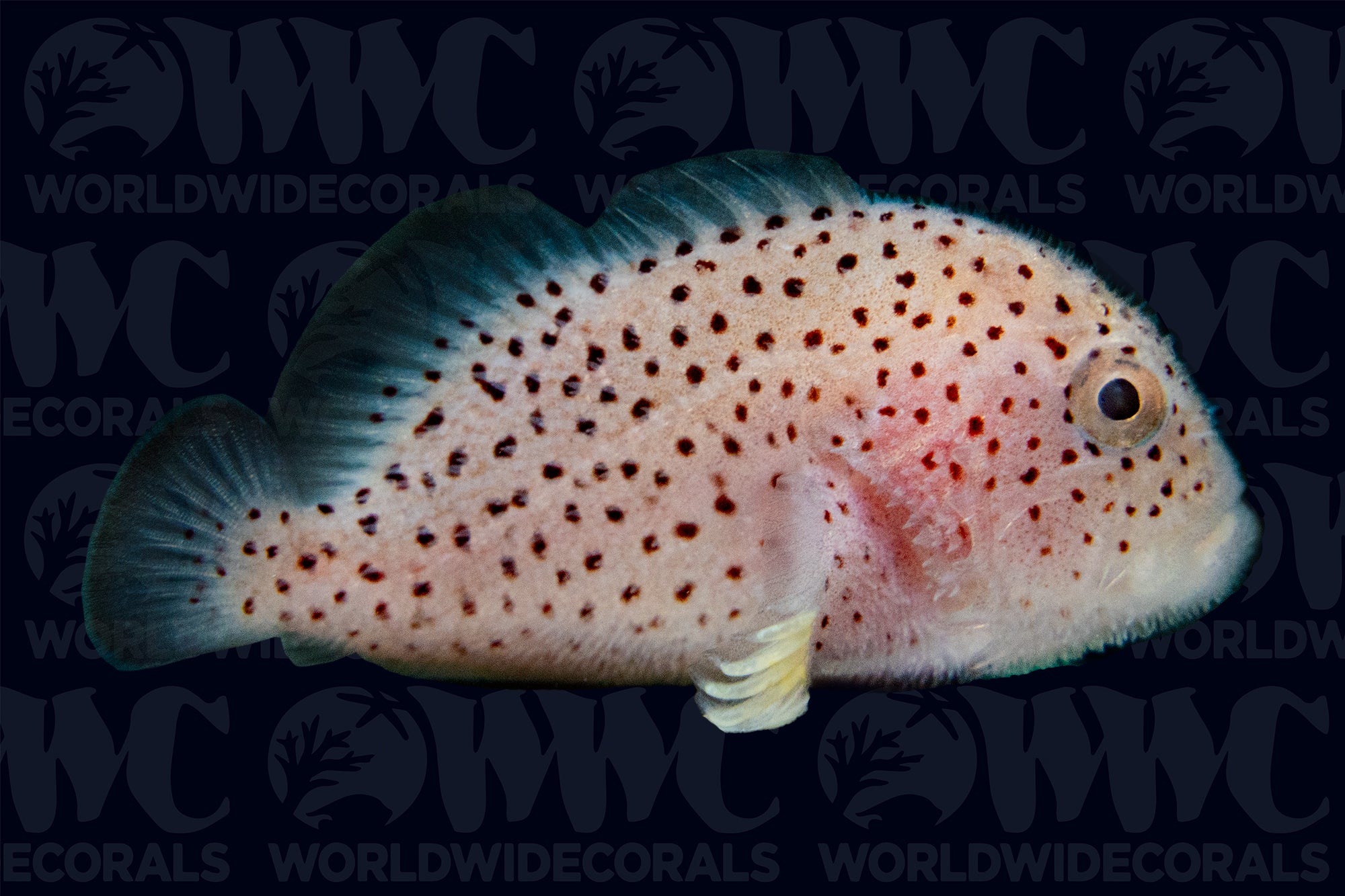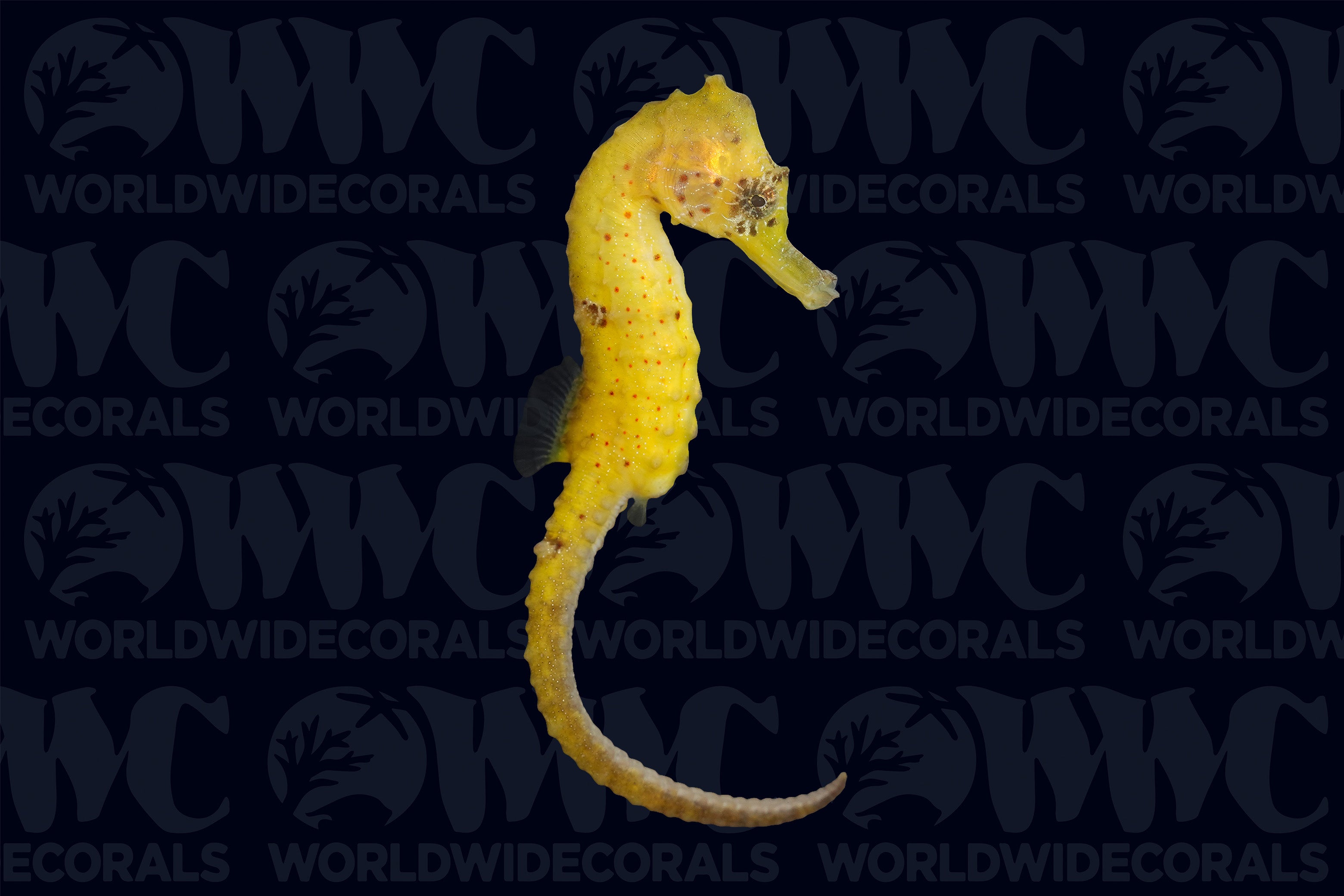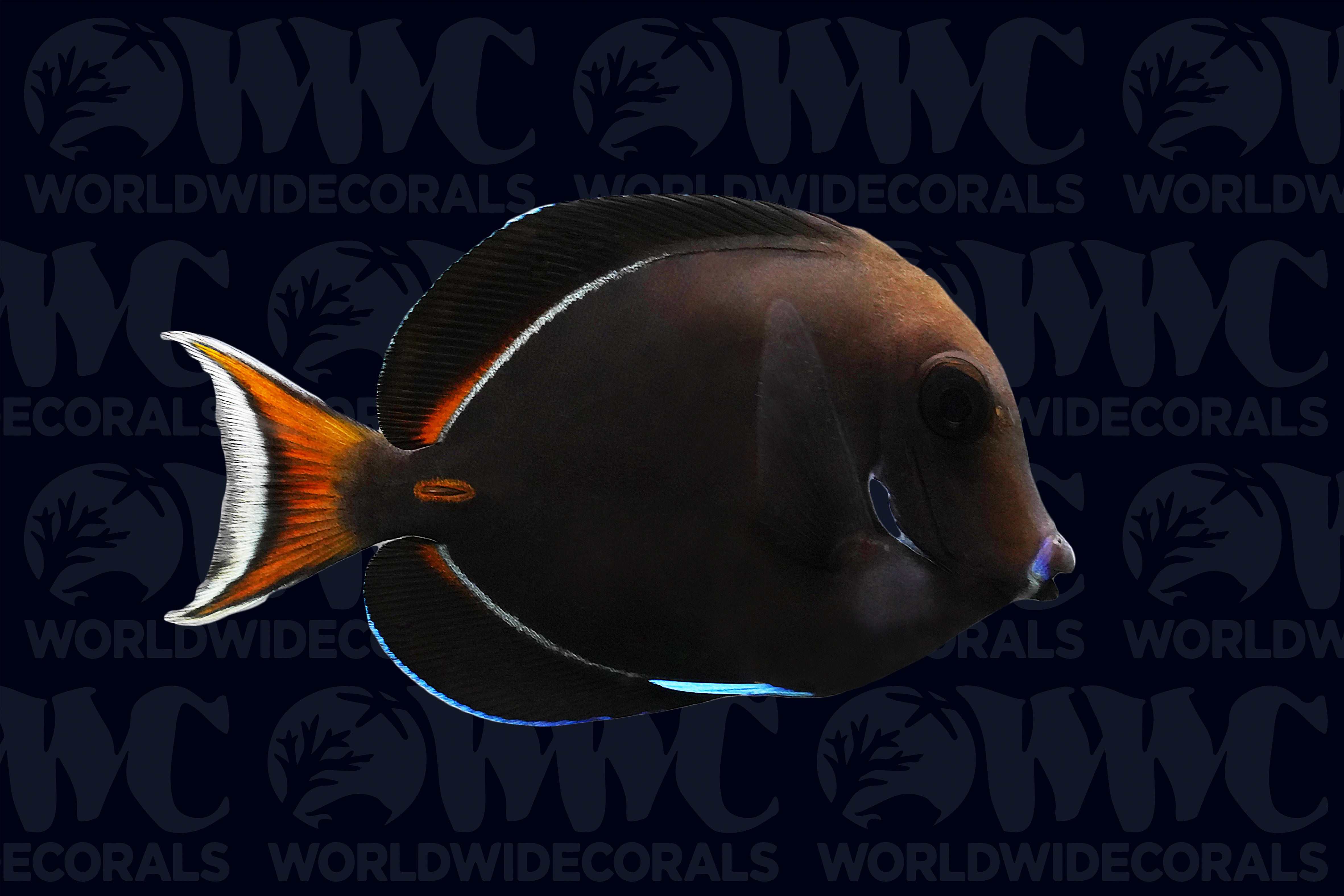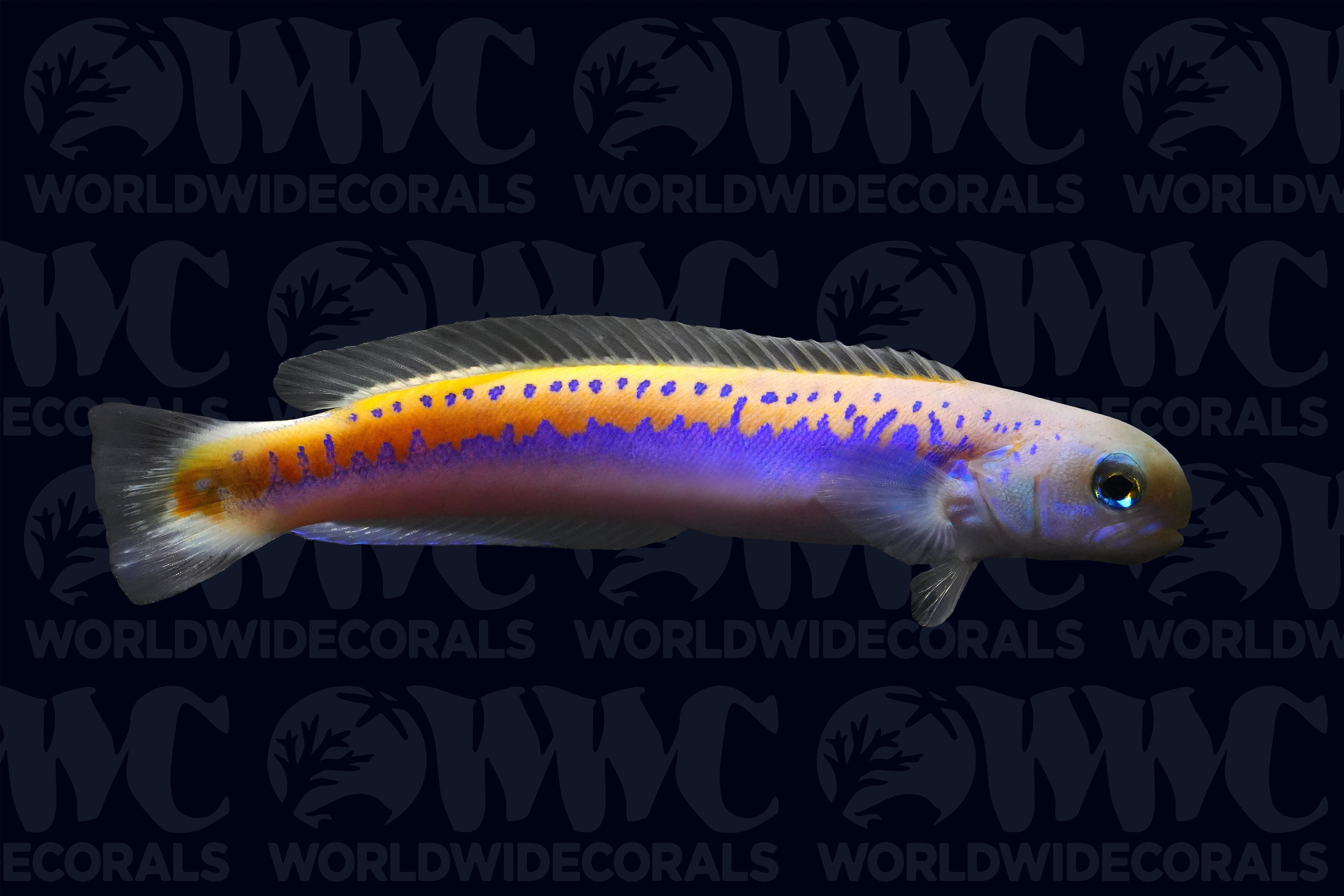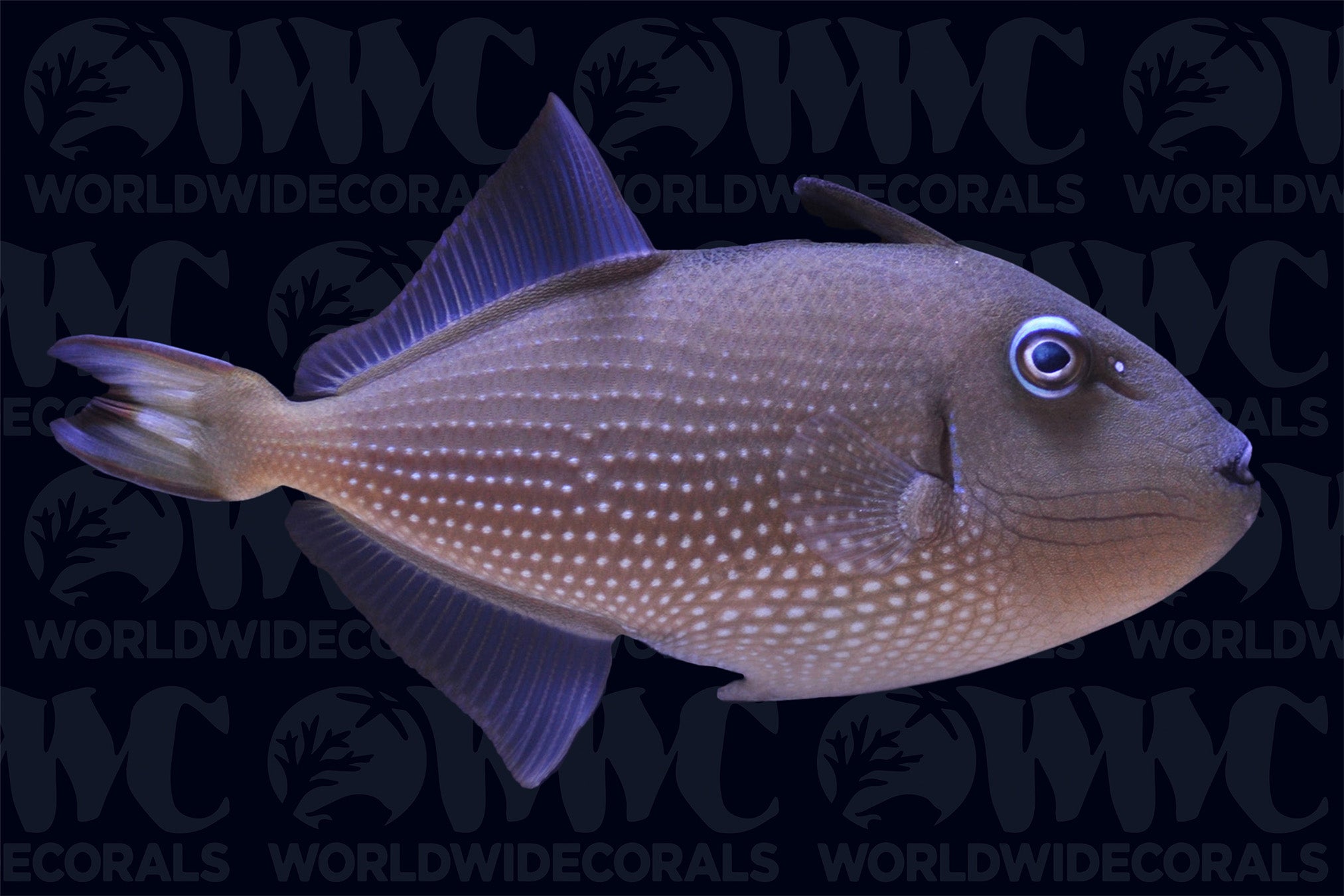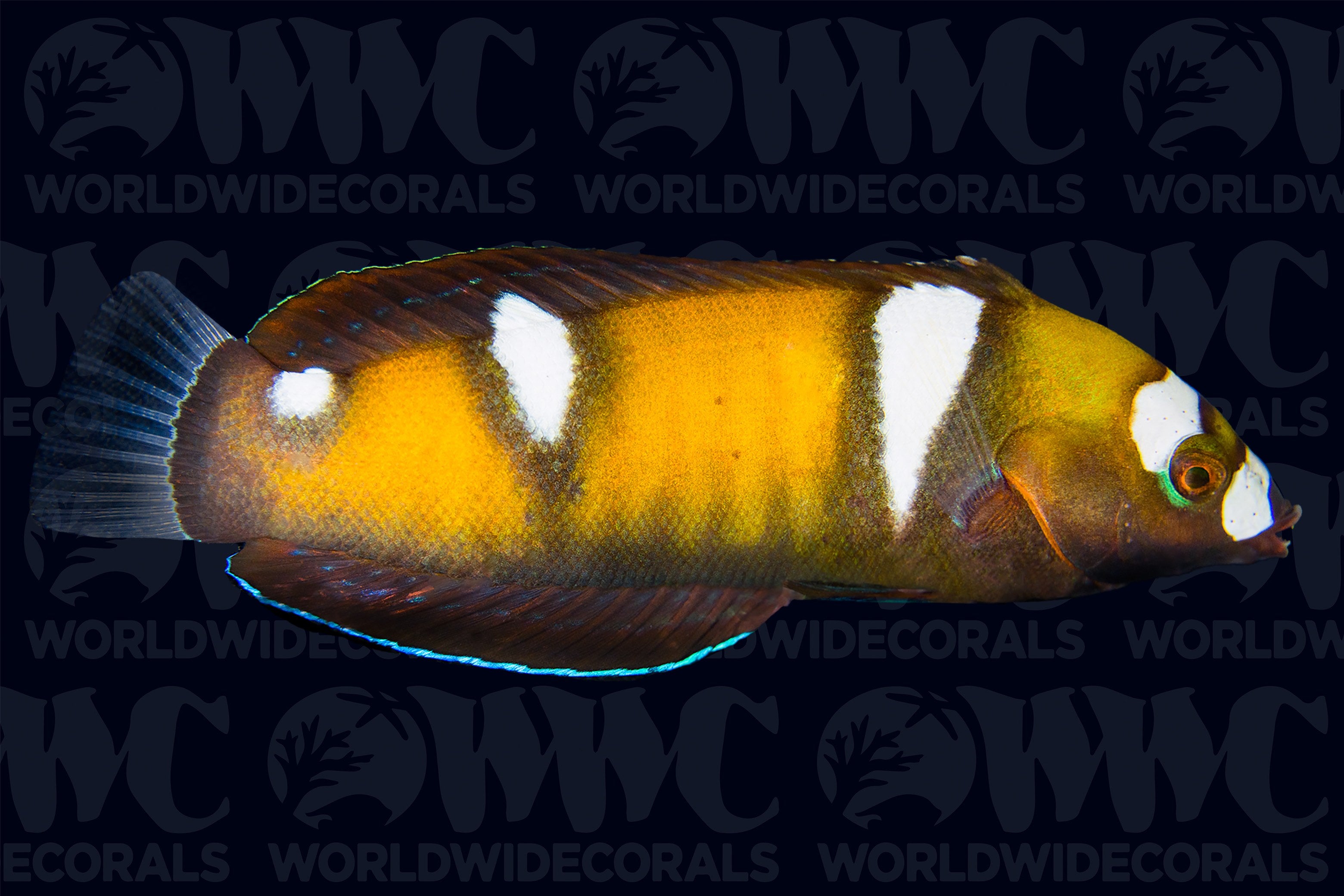Description
Hoplolatilus oreni
Tilefish are brilliantly colored marine fish with an active disposition and the inclination to do housework. Most aquarium species are burrowers, digging a home out from under rocks to use as cover from predators and a safe haven for sleeping. Hoplolatilus Tilefish are the most common aquarium inhabitants due to their smaller size of 8”, and often colorful markings. Generally considered coral reef species, Tilefish are most often found on sandy or silty substrates right at the base of the reef structure. Tilefish tend to hover above their lair while they hunt for food. When they sense danger, they quickly retreat to their burrows until the threat has passed. Tilefish are diurnal, meaning they are active during the day. Tilefish do require a high level of husbandry and should be considered by expert aquarists only. They require both free swimming space and good cover. Water quality conditions should be maintained within typical marine aquarium ranges with stability of these parameters being of utmost importance. Because of their deep-water origins, we recommend keeping these fish under low to moderate lighting conditions. Tilefish need a sandy substrate, at least 3 inches deep, allowing them to dig. Provide live rock or other solid structures to mimic the cover these fish would seek out in the wild. Be sure these structures are secure to prevent them collapsing as burrows are created. Though they are good community and reef-safe fish, they are often territorial towards other Tilefish. Due to their small size and relatively high activity level, they do best when fed small amounts multiple times daily. Their natural diet of plankton lends itself to the types of food commonly available to aquarists, such as mysid shrimp or other meaty morsels. The Oreni Tilefish has a unique pattern of blue, yellow and orange colorations. They are found in the Western Indian Ocean.
Tilefish are brilliantly colored marine fish with an active disposition and the inclination to do housework. Most aquarium species are burrowers, digging a home out from under rocks to use as cover from predators and a safe haven for sleeping. Hoplolatilus Tilefish are the most common aquarium inhabitants due to their smaller size of 8”, and often colorful markings. Generally considered coral reef species, Tilefish are most often found on sandy or silty substrates right at the base of the reef structure. Tilefish tend to hover above their lair while they hunt for food. When they sense danger, they quickly retreat to their burrows until the threat has passed. Tilefish are diurnal, meaning they are active during the day. Tilefish do require a high level of husbandry and should be considered by expert aquarists only. They require both free swimming space and good cover. Water quality conditions should be maintained within typical marine aquarium ranges with stability of these parameters being of utmost importance. Because of their deep-water origins, we recommend keeping these fish under low to moderate lighting conditions. Tilefish need a sandy substrate, at least 3 inches deep, allowing them to dig. Provide live rock or other solid structures to mimic the cover these fish would seek out in the wild. Be sure these structures are secure to prevent them collapsing as burrows are created. Though they are good community and reef-safe fish, they are often territorial towards other Tilefish. Due to their small size and relatively high activity level, they do best when fed small amounts multiple times daily. Their natural diet of plankton lends itself to the types of food commonly available to aquarists, such as mysid shrimp or other meaty morsels. The Oreni Tilefish has a unique pattern of blue, yellow and orange colorations. They are found in the Western Indian Ocean.
3 DAY GUARANTEE | Hassle Free | 100% Satisfaction | Online Orders Only


